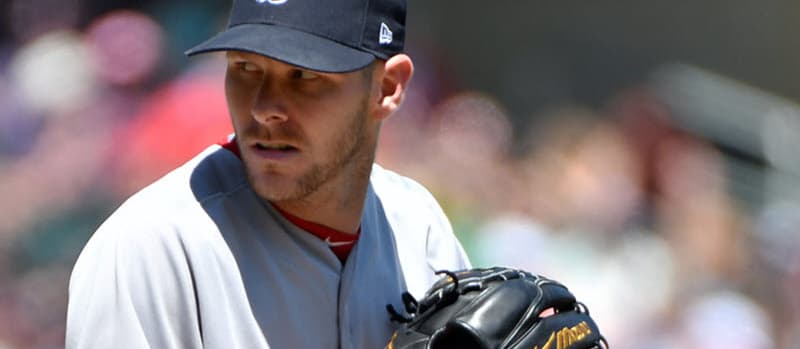I use a tiered approach discussed here. I'll share my tiers in a bit, but before I do, there isn't a one-size-fits-all grouping. When doing them for your leagues, don't get hung up on the math. There's too much variance with ERA to get bogged down with minutia. Just group them by feel, ending up with five or six tiers that contain ample arms to cover sufficient starters for your league. Sure, look at projections, but focus more on where the breaks seem natural. Trust me, you'll get to a point it no longer seems right to group a hurler with that tier, so you start a new one.
Here's where I'm at as I head into the National Fantasy Baseball Championship (NFBC) weekend where I'll be doing an NL-only, AL-only and 15-team mixed auction as well as the Main Event draft.
I use a tiered approach discussed here. I'll share my tiers in a bit, but before I do, there isn't a one-size-fits-all grouping. When doing them for your leagues, don't get hung up on the math. There's too much variance with ERA to get bogged down with minutia. Just group them by feel, ending up with five or six tiers that contain ample arms to cover sufficient starters for your league. Sure, look at projections, but focus more on where the breaks seem natural. Trust me, you'll get to a point it no longer seems right to group a hurler with that tier, so you start a new one.
Here's where I'm at as I head into the National Fantasy Baseball Championship (NFBC) weekend where I'll be doing an NL-only, AL-only and 15-team mixed auction as well as the Main Event draft.
As explained in the linked piece, I am prepared to utilize several courses, each with a different focus. The two requiring the most contemplation are starting with a Tier 1 hurler and/or an elite closer.
The Case for an Ace
The mere fact that runs are more plentiful isn't enough, on its own, to go the route of one of the Big Four. As the league ERA rises, so does the number needed to generate adequate points in your roto league. However, there are other compelling reasons to embark on this path.
The average innings per start is at an all-time low, just 5.5 frames. Some leagues have adjusted by lowering the innings minimum, and some aren't so prescient so avoiding a penalty could be a challenge. Not only do the aces provide more innings than the lower tiers, but the ratio cushion helps buffer the less valuable innings necessary to reach the limit.
One of the overlooked aspects of the 2018 campaign is the lengthening of the schedule. MLB is starting four days earlier, adding four off-days to the season. The repercussion will be fewer two-start weeks to bolster innings, rendering the impact of Kershaw, Scherzer, Kluber and Sale even more beneficial. While other pitchers will be skipped, the top arms will likely be kept on a typical schedule, occasionally given the extra day of rest.
The downside of a first round or top-dollar pitcher is falling behind in hitting stats, especially of the counting variety. Many suggest this is OK, because everyone is smacking 20 homers, so you can catch up. The problem here is everyone is drafting these batters, so you aren't catching up. Something must give. The best counter is focusing less on batting average and more on power and speed, with run production dovetailing with homers and steals. If you're concerned, there's always an underappreciated DJ LeMahieu to help batting average at a discount. The Junior Circuit equivalent could be Joe Mauer (stop laughing) or perhaps Xander Bogaerts.
Obviously, only four owners in a mixed league and two in single league formats are going to roster one of the aces. If I'm not one, I'm not going to concede the championship. However, there are valid reasons to ensure you are one of those building around an ace.
Saving Grace
In mixed or NL-only leagues, the argument for a top closer is really whether to invest in Kenley Jansen, as the elite save specialists are scant. Some are concerned about Craig Kimbrel as he deals with his young daughter's health issues. Personally, so long as there isn't a complication, I side with those expecting the Red Sox stopper to use the three hours each game day as a release and he'll be fine, but you never know. It's easy for me to say that as I type this from a hotel room overlooking the Vegas strip.
The larger point is, after Jansen and Kimbrel, every closer option has a "yeah, but." Corey Knebel's control is still a question. Aroldis Chapman has never saved 40 games and there's a ton of understudies in the stacked Yankees bullpen. Felipe Rivero lacks experience while the Pirates could struggle to be a .500 team. Go on down the line, everyone has a wart. Everyone, that is, expect Jansen. Imagine going through the entire season without sweating out FAAB bids on saves. That's comforting. Keep in mind if Jansen has a typical season, his ratios and strikeouts are good for two points per category as compared to an average closer, and even more over a lesser option.
Setup Relievers: Fantasy's Moneyball assets
Regardless of the pathway you elect to follow, dominant middle relievers should be an integral component of successful fantasy staffs. As mentioned, the average start length is dwindling. Many streaming options will fail to toss even five stanzas. The weekly innings gap between the top middle relievers and the dreck starters is negligible, as the middle reliever has a better chance of a win, superior ratios and perhaps even more whiffs. It's going to be extremely demanding finding suitable spot starters in the current landscape. The middle reliever parachute offers protection.
Decisions, decisions, decisions
Your approach is contextual. In leagues with active trading, the best tactic could be to accumulate as many stats as possible at a discount, then dealing from depth and strength to balance things out. This is especially true in keeper leagues where the top options are often inflated substantially, usually handcuffing those teams to the point they look to unload the overpriced arms for cheaper keepers. In leagues with little or no trading, balance is required from the outset.
One last note before I selfishly shift my focus to my own auctions and drafts. The hitting to pitching split of the recent AL and NL only Tout Wars auctions was the typical 69:31 distribution, in line with the earlier LABR auctions. The Mixed auction landed at 67:33, not quite to the 63:37 extreme discussed a few weeks back, but enough to note. The takeaway is it's alright to shy away from buying the top arms in single leagues as prices will settle. However, strongly consider adjusting to the market in mixed formats. That said, I'll be quite curious to see what happens in my AL and NL only auctions on Friday. I'll be ready to loosen the purse strings if it appears more will be spent on pitching.




























